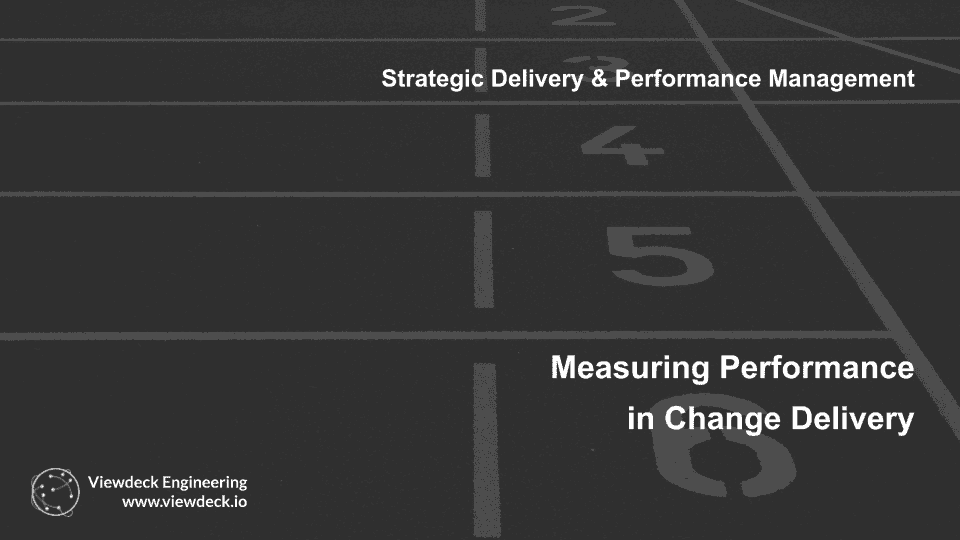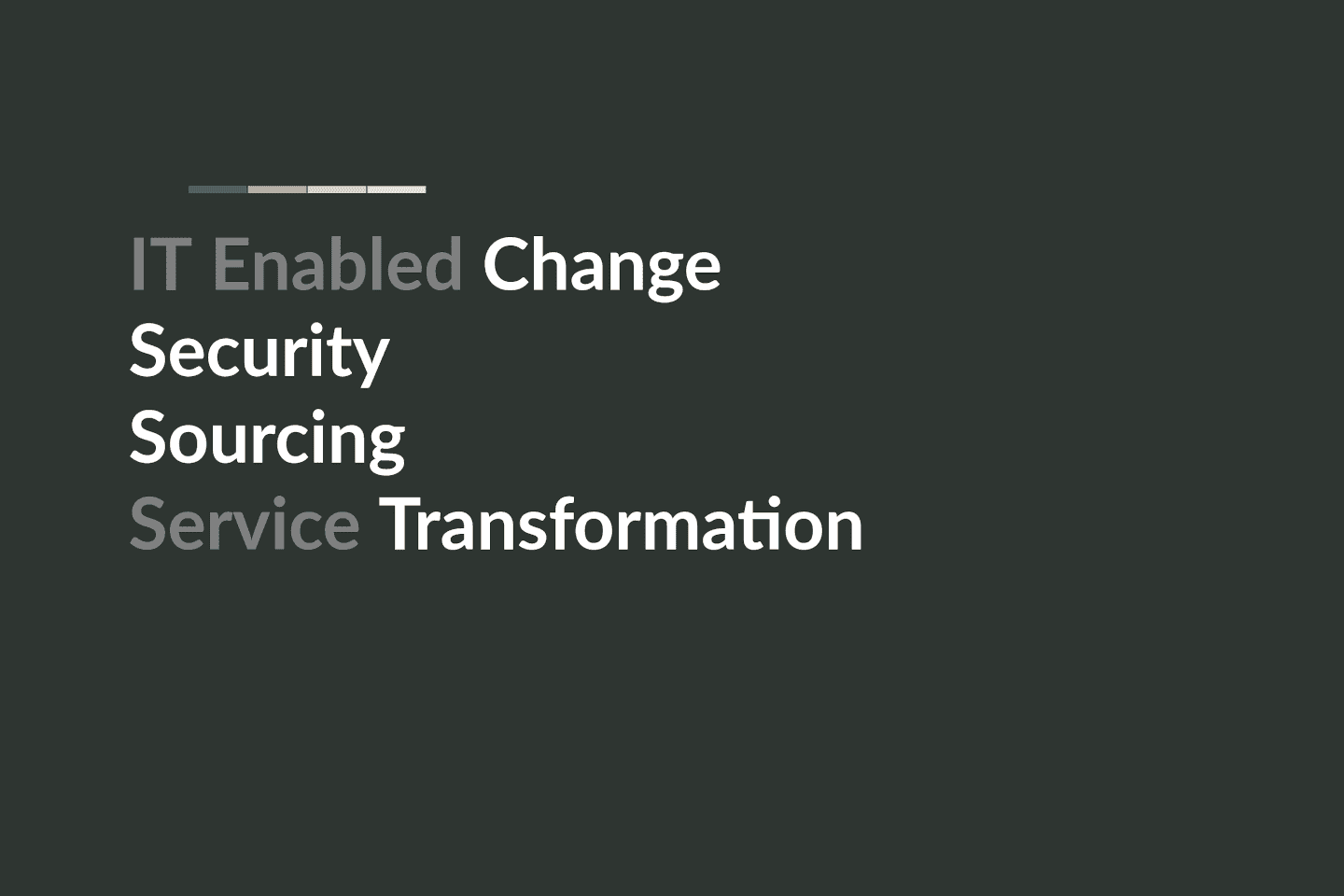Measuring Performance in Change Delivery
Explore methodologies and best practices for measuring performance in large change initiatives.
Measuring performance in the delivery of change within a large programme or organisation can be critical to ensuring successful outcomes. In this short article, we will explore some of th methodologies and best practices for measuring performance in the delivery of change , the roles and responsibilities involved, and the benefits to the senior stakeholders.
Benefits of Measuring Performance
Lets remind us why Performance Management is important and a key tool/control for all major programmes.
-
Improved Accountability: Measuring performance enables organisations to hold teams and individuals accountable for their performance, ensuring that they deliver on their commitments.
-
Better Decision Making: Measuring performance enables data-driven decisions, ensuring that they are making informed decisions that align with the organisation's strategic objectives.
-
Continuous Improvement: Measuring performance enables organisations to identify areas for improvement and make adjustments to their processes and practices, driving continuous improvement.
-
Better Stakeholder Communication: Measuring performance enables organisations to communicate performance results to stakeholders effectively, ensuring that stakeholders are informed and engaged in the change initiative
Methodologies for Measuring Performance
Many guides, approaches and styles have been developed over the years to help measure and report on performance. We can summaries the key themes and approaches that are used to measure performance in the delivery of change .
Key Performance Indicators (KPIs): KPIs are metrics that are used to measure progress towards specific goals and objectives. KPIs can be used to measure performance at various levels, including project, program, and portfolio levels. Examples of KPIs include time to market, budget adherence, and customer satisfaction.
Earned Value Management (EVM): EVM is a methodology that integrates project scope, schedule, and cost objectives, enabling organisations to measure performance against planned objectives. EVM uses metrics such as cost variance, schedule variance, and earned value to measure project performance.
Balanced Scorecard: The Balanced Scorecard is a framework that enables teams to measure performance across different perspectives, for example: financial, customer, internal processes, learning and growth. The Balanced Scorecard provides a business view against key objectives of performance, enabling organisations to measure in areas beyond traditional financial metrics. The Balanced Scorecard approach is similar to the Benefits Management process, the scorecard providing a executive/senior stakeholder representation of benefits realisation against vision and objectives.
Lean Six Sigma: Lean Six Sigma is a methodology that combines Lean principles and Six Sigma methodologies to improve process efficiency and quality. Lean Six Sigma enables the measurement of performance by identifying, measuring and eliminating process waste and defects.
Best Practices for Measuring Performance
Several best practices can be adopted to help measure performance. Again we have summarised a wide set of research to provide an easy to digest summary. The references provided below provide further detail if you want to expand your understanding.
Define Clear Goals and Objectives: Clear goals and objectives are critical to measuring performance effectively. Organisations must define clear and measurable goals and objectives that align with the strategic objectives (Vision, Goals etc)
Select Appropriate Metrics: Selecting appropriate metrics is critical to measuring performance effectively. Selecting metrics that are relevant, actionable, and aligned with an organisation's goals and objectives is key.
Establish Baselines: Establishing baselines is critical to measuring performance effectively. By establishing baselines for each metric, organisations can measure progress against planned objectives.
Regularly Monitor and Report Performance: Regularly monitoring and reporting performance is critical to ensure effectiveness, awareness, assurance and enable right management focus. Programmes should establish regular reporting cadence and communicate performance to stakeholders as part of their governance model.
Roles and Responsibilities
We will provide a simple summary of the key roles and responsibilities. Local governance and assurance structures will have an impact on the titles and how some of the responsibilities are shared. This list provides a good overview that can provide a yardstick to ensure structures have the right roles covered, in the right place.
Executive Sponsor: The executive sponsor is responsible for defining the strategic objectives and goals of the change initiative and ensuring that performance is measured effectively.
Program Manager: The program manager is responsible for overseeing the change initiative and ensuring that performance is measured effectively.
Benefits Manager : The Benefits Manager ensures that expected benefits are clearly defined, quantified, and achievable. They oversee tracking of benefits realisation, aligning them with performance metrics to monitor the programme's progress.
Project Manager: The project manager is responsible for ensuring that project performance is measured effectively and reported regularly to stakeholders.
Performance Analyst: The performance analyst is responsible for analysing performance data and providing insights and recommendations to stakeholders.
Conclusion
Measuring performance in the delivery of change within a large programmes is critical to ensuring successful outcomes. To measure performance effectively, organisations must define clear goals and objectives, select appropriate metrics, establish baselines, and regularly monitor and report performance.
It is critical in large change initiatives because it provides a structured approach to monitor, measure, and control the progress of change implementation. In complex organisations, there are numerous inter dependencies and variables, and performance management helps track these against predefined objectives and targets.
For senior stakeholders and governance bodies, performance management offers a real-time insight into the progress of complex and often inter dependent initiatives, highlighting any discrepancies between the planned and actual outcomes. It provides an ongoing assurance of strategic alignment but also enables timely decision-making and corrective actions when deviations occur.
Furthermore, it enhances visibility of progress by systematically reporting on key performance indicators and milestones, thereby ensuring transparency and accountability. The resultant data-driven insights enable stakeholders to effectively manage risks, track benefits realisation, and ultimately, determine the success of the change initiative.
In summary, performance measuring can bring several key benefits, including improved accountability, better decision-making, continuous improvement, and better stakeholder confidence.
References:
- PMI (2021). A Guide to the Project Management Body of Knowledge (PMBOK® Guide) – Sixth Edition. Project Management Institute.
- Kaplan, R. S., & Norton, D. P. (1992). The Balanced Scorecard: Measures that Drive Performance. Harvard Business Review.
- Juran, J. M., & Godfrey, A. B. (1998). Juran's Quality Handbook. McGraw-Hill.
- Agile Business Consortium (2021). Agile Business Framework. Retrieved from https://www.agilebusiness.org/pages/agile-business-framework
- Lean Six Sigma (2021). What is Lean Six Sigma? Retrieved from https://leansixsigma.com/what-is-lean-six-sigma/
- Project Management Institute (2021). Project Management for Development Professionals. Retrieved from https://www.pmi.org/certifications/types/project-management-pmd-pro
- Naderi, M., & Zarei, M. (2017). A Comparative Study of Key Performance Indicators and the Balanced Scorecard. International Journal of Applied Operational Research, 7(1), 37-47.
- Aborishade, R., Hunsucker, J. L., & Patterson, J. (2019). Earned Value Management in the Agile Environment. Journal of Information Systems Applied Research, 12(2), 54-65.
- Goldratt, E. M. (1990). The Theory of Constraints. North River Press.
- Agile Alliance (2021). Agile Manifesto. Retrieved from https://www.agilealliance.org/agile101/the-agile-manifesto/































